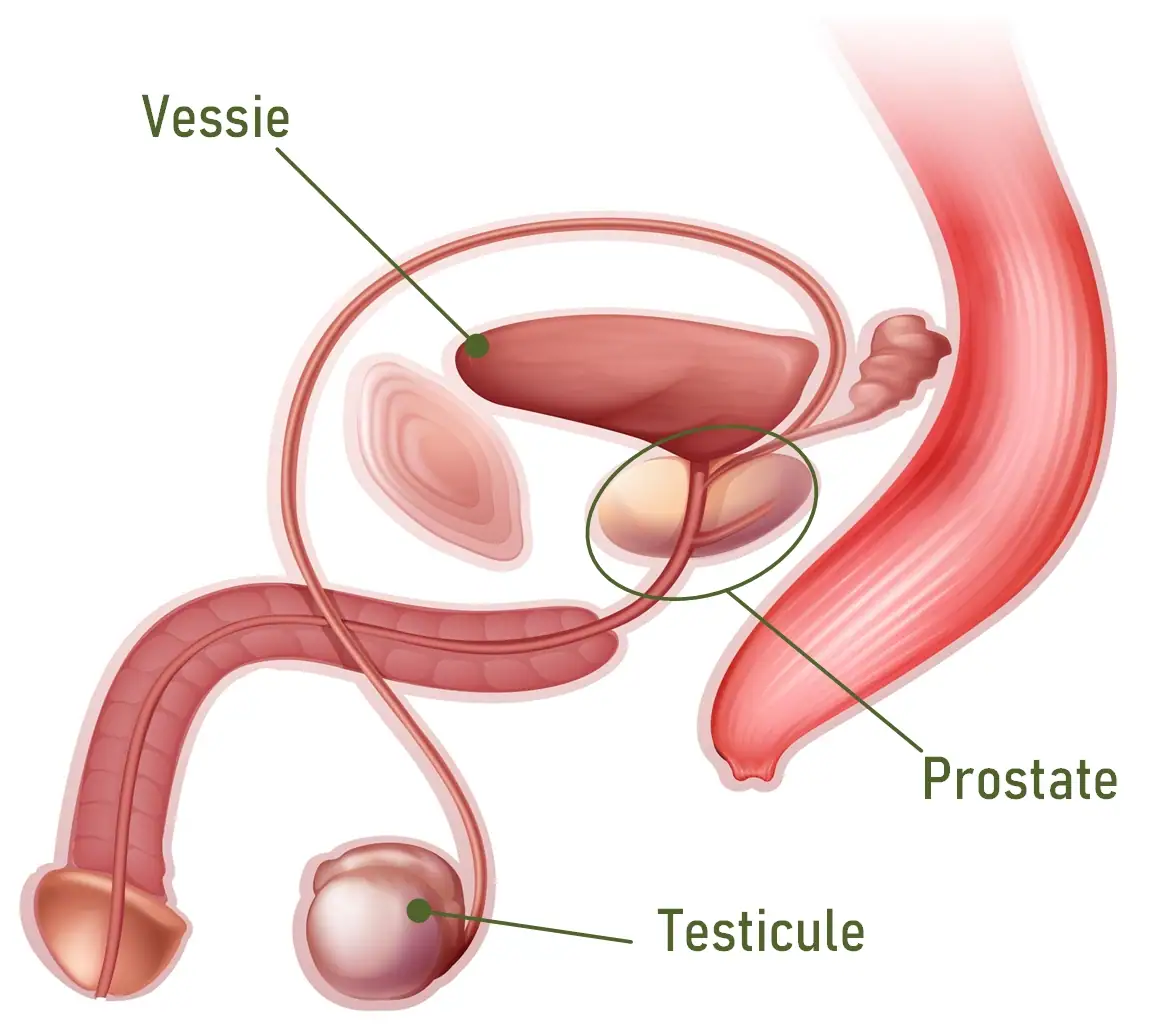Sommaire :
◉ What is the prostate?
The prostate is a muscular gland of the male reproductive system. It is located between the bladder and the penis and surrounds the urethra, the tube through which urine and semen pass.
The main function of the prostate is to produce and secrete fluid that forms part of semen. It also helps propel sperm out of the body during ejaculation.

◉ Prostate development
The prostate goes through several stages of development throughout a man's life. The 3 main steps are :
- Embryo stage: Between the 8th and 12th week of fetal development, the prostate begins to form from a structure called the urogenital sinus.
- Pubertal stage: During puberty, ages 9 and 16, she begins to increase in size and function under the influence of androgens, such as testosterone.
- Adult Stage: As an adult, around 25 years old, it reaches full size and maturity. It plays an important role in the production of sperm and the regulation of urinary function.
- Stage of Aging: As men age, the prostate can begin to grow. At 60, she may be the size of a lemon.
◉ Structure of the prostate
The prostate is a small, soft organ. In young men, it is about the size of a walnut. It weighs around 30 grams and is generally soft and smooth to the touch.
It is anatomically divided into five lobes (anterior and posterior lobes, two lateral and a median lobe) and three zones:
- The central zone: forms the base of the gland that surrounds the ejaculatory canals
- The peripheral zone: is the largest zone constituting 70% of the gland, located towards the back of the gland.
- Transition zone: is a small glandular area that surrounds the urethra. It is the only part of the gland that continues to grow throughout life.
- Fibromuscular stroma (anterior zone): is not glandular and contains mainly muscle and fibrous tissue.
◉ What is the function of the prostate?
Although the prostate is not essential for survival, it plays an important role in fertility :
Participation in producing sperm
The main function of the prostate is to supply prostatic fluid to sperm, it is a mixture of enzymes, minerals and other substances that help nourish and protect sperm.
Part of the sperm is produced in the prostate (20 to 30% of total sperm volume), the rest comes from the seminal vesicles (50 to 65%) and the testicles (5%).
Hormonal metabolism
The gland contains the enzyme that converts testosterone into a biologically active form called dihydrotestosterone. This hormone is important for the development of secondary sex characteristics, such as facial hair.
Closure of the urethra during ejaculation
It is located near the base of the penis and can contract and relax during sexual arousal, helping to push semen out of the body during ejaculation.
◉ Prostate problems
- Prostatitis : is an inflammation of the prostate which may or may not result from a bacterial infection
- Benign Prostatic Hyperplasia (BPH): benign means “no cancer” and hypertrophy means abnormal enlargement. More common in people aged 40 or older or with a family history of BPH
- Prostate cancers: these tend to grow slowly compared to most other cancers. According to WCRF, it is one of the most common cancers in men. More common in people aged 50 or older or with a family history of prostate cancer
- Stones: These are hard masses that form inside the prostate and can cause pain and difficulty urinating.
◉ Symptoms
Prostate problems can cause a variety of symptoms, be sure to tell your doctor if you experience any of the symptoms listed below. :
- Having an urgent need to urinate.
- Need to urinate a lot.
- Not being able to urinate at all.
- Having low urinary output
- Need to get up several times during the night to urinate
- Leaks or drips of urine.
- Discomfort or pain when urinating or after ejaculation
- Burning sensation when urinating
- Blood in your urine
Note: It is important to note that while these symptoms may indicate a prostate problem, they may also be caused by other underlying conditions.
◉ Examinations and tests to check the prostate
Health professionals can diagnose prostate problems using various types of exams :
- Digital Rectal Exam (DRE) :With a gloved, lubricated finger, your doctor feels the prostate from the rectum. He checks the size, firmness and texture of the prostate or any pain may be felt when pressing on the prostate.
- PSA test: The prostate makes a protein called PSA, which can be measured with a blood test. It is used primarily to screen for prostate cancer.
- Ultrasound: Shows the anatomy of the prostate, including identifying areas suspected of cancer.
- Biopsy: Small samples of tissue are taken directly from the prostate to diagnose or rule out cancer.